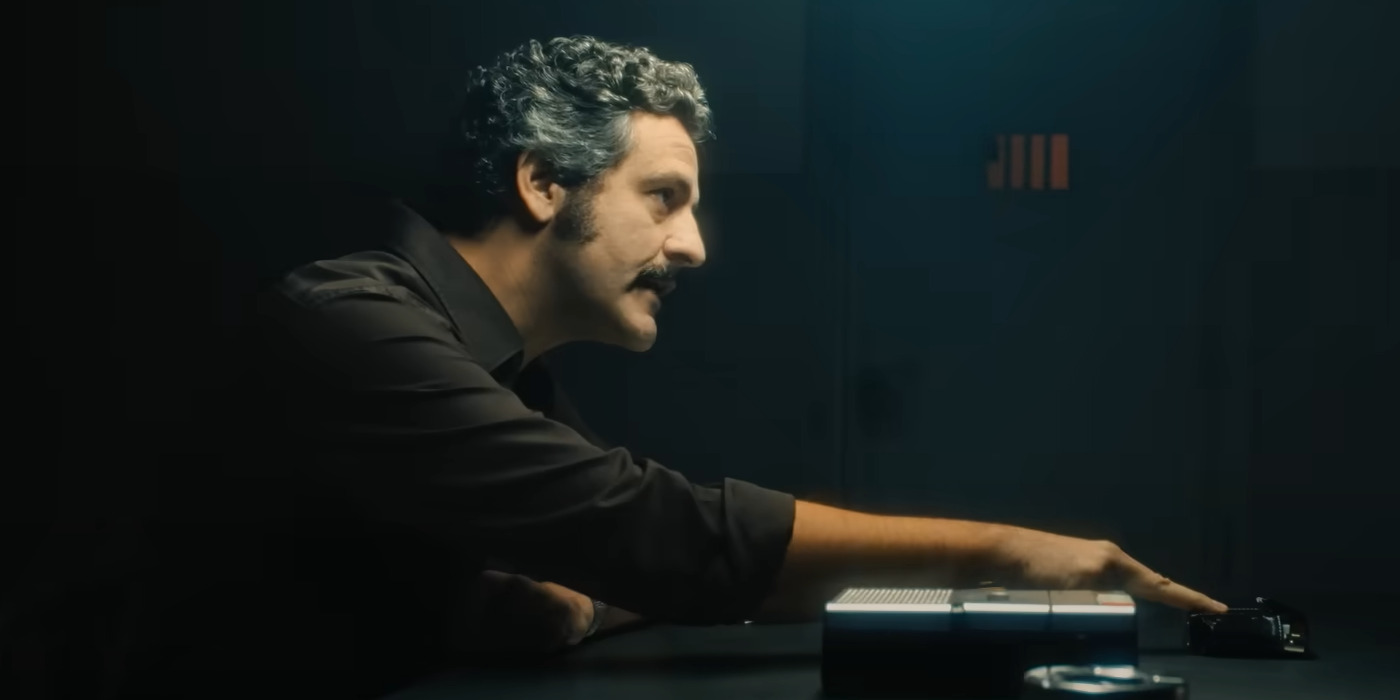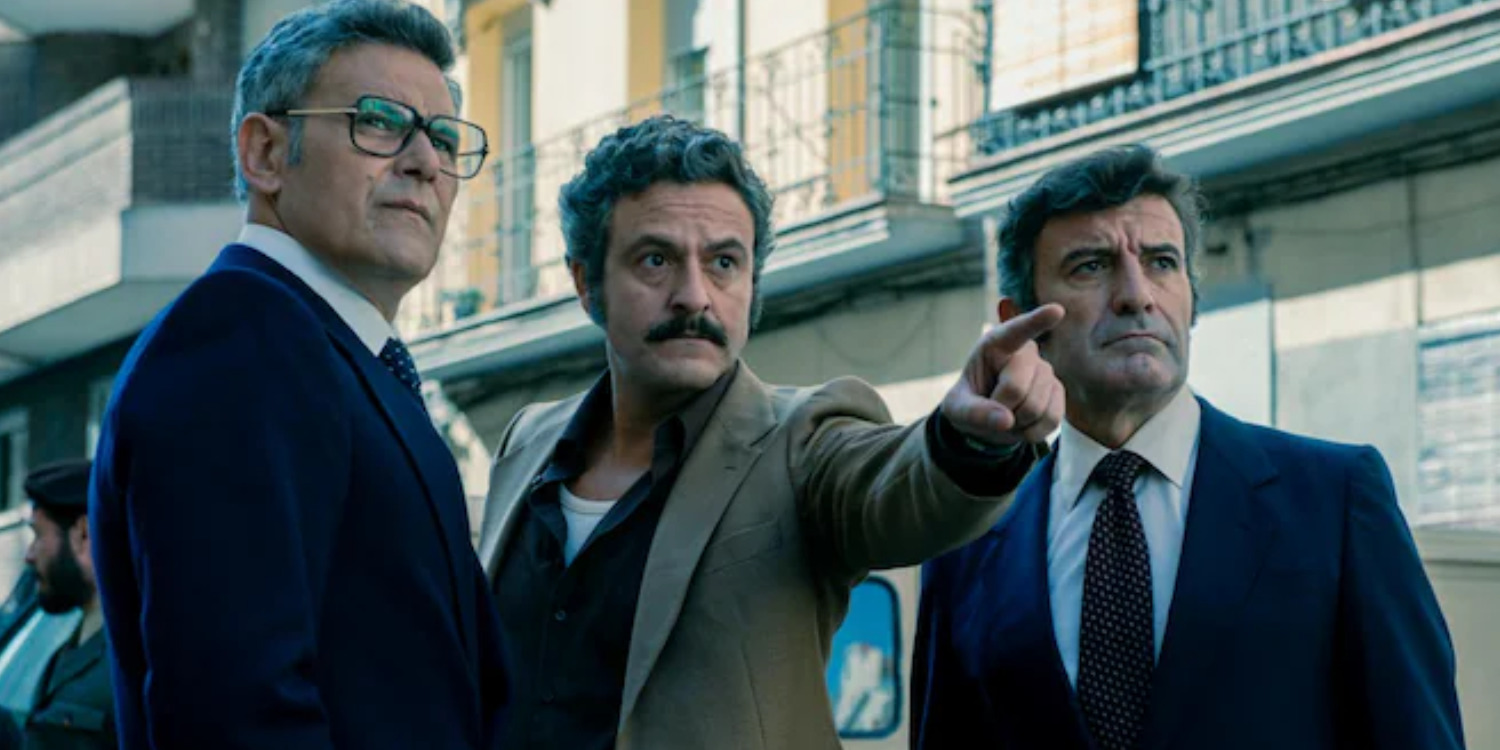Netflix’s ‘Bank Under Siege’ is a crime thriller show that tells the story of a bank robbery that is more than just a heist but rather an attack on the country’s democracy. The story unfolds in 1981 when, on the morning of May 23, José Juan Martínez leads 11 masked individuals to take control of the Central Bank in Barcelona. As they take hundreds of hostages under the guidance of their Number 1 (José), the authorities and reporters race against time to learn about the motive driving the robbers. Thus, they uncover a connection between the hostage situation and the recent attempt at a coup d’état at Spain’s Congress of Deputies.
Consequently, with multiple lives on the line, the tense situation unravels over the next 36 hours. Directed by Daniel Calparsoro and alternatively titled ‘Asalto al Banco Central,’ the Spanish show focuses on the reality of socio-political tinted crime and transports the viewers to a time when the after-effects of the country’s radical change were still uncoiling. As a result, the narrative finds further footing in realism through its criminal genre as well as period-appropriate social relevancy.
Bank Under Siege: The Real-Life Story of the Barcelona Central Bank Heist
‘Bank Under Siege’ is an on-screen dramatization of the real-life robbery that took place in Barcelona in 1981. As such, screenwriter Patxi Amezcua’s script remains based on the real events that occurred during this historical crime in Spain’s history, with varying levels of creative liberty applied to different corners of the story to make it more engaging. Nonetheless, despite any fictional tinkering with the event — mostly done to flesh out characters — the story’s connection to reality remains evident. In real life, a group of armed individuals took hold of the Central Bank headquarters in Barcelona on May 23, 1981. Shortly after, journalists retrieved a letter from an anonymous caller that revealed the demands made by the assailants. They demanded the release of 4 individuals accused of involvement in the coup attempt of February 23.

The assailants demanded the release of 4 individuals accused of involvement in the coup attempt of February 23. The accused men included General Luis Torres Rojas — who had reportedly become something of a right-wing hero since the coup attempt — and his lieutenant colonels, Antonio Tejero Molina, Jose Ignacio San Martin, and Pedro Mas Oliver. As per the demands of the assailants controlling the Central Bank, they wanted the aforementioned four men to be put on a plane from Madrid to Argentina. Simultaneously, they also wanted a plane for their own escape. Furthermore, according to reports, the perpetrators were also attempting to rob the bank’s vault during this time.

On his part, Colonel Antonio Tejero Molina refused to abandon the country and issued a statement from his prison cell for the assailants in Central Bank to free the hostages. Ultimately, the hold-up continued for 36 hours and ended with the police taking control of the building. In the end, nine individuals were arrested, including José Juan Martínez Gómez. One of the perpetrators escaped, while another died. In the aftermath, authorities released a report sharing that the individuals who took over the Central Bank did so only with the intention to rob the bank, using their political demands as a ruse to buy themselves time for escape. According to some reports, José Juan Martínez Gómez was ultimately sentenced to 30 years in prison.
Bank Under Siege Offers a Window to an Era of the Past
Given the strong connection between ‘Bank Under Siege’ and a real-life historical event, the show inevitably sports a significant sense of realism. Through varying characters, the narrative gets to delve into different political ideologies and explore the part they played in the crime. As a result, viewers who recall real-life events from the 80s will find the tense socio-political landscape of the time reflected in the narrative. On the other hand, the younger generation will find a way to dive into a historical chapter of Spain told through an entertaining medium.

Consequently, even when the show strays from reality through the occasional fictionalized character or instance, it doesn’t force the overarching narrative to sacrifice any authenticity. Furthermore, the cast of characters offers a rich tapestry of complex morality, politics, and ideals that accentuate the relatability factor in the show. In fact, even one of the traditionally antagonistic characters, José Juan Martínez, the leader of the robbers, remains a well of complex characterization. Thus, the audience gets to explore two sides of a coin and take in the complex socio-political landscape of Spain in the 1980s. Ultimately, even though it isn’t a biographical recreation of the historical event, ‘Bank Under Siege’ presents a realistic and authentic account of the crime and its socio-political nuances.
Read More: Best Movies Based on True Crime on Lifetime


You must be logged in to post a comment.